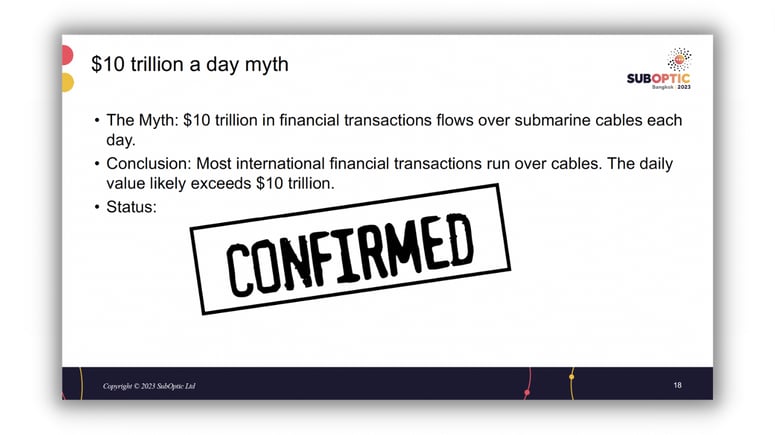The press regularly reports that $10 trillion of financial transactions flow over submarine cables every day. But is this true?
To properly tackle this claim, we need to test two things.
1. Do financial institutions generally use submarine cables for transactions?
The short answer is yes. Unfortunately, I can't get too specific here because a lot of TeleGeography's data on this topic is based on confidential interviews with banks and financial institutions.
But trust me on this, most financial institutions are using submarine cables just like everyone else.
2. Are there $10 trillion per day globally in financial transactions?
Here's the trickier part: calculating the volume per day in international financial transactions.
Let’s examine SWIFT transactions as an example. SWIFT is the international network on which cross-border payments are initiated; the actual payments themselves are executed on entirely separate networks.
In 2004, SWIFT cited 10 million messages a day and the average value per message was about $500k. This came out to about $5 trillion a day.
A few months ago, SWIFT cited almost 45 million messages a day, a 4.5x increase. So if the value per message stayed the same, that implies $22.4 trillion a day.
Even if the average transaction value on SWIFT has fallen, the combination of SWIFT plus other financial networks’ daily volumes would put us over the $10 trillion mark.
So I think we can go ahead and safely call this myth true.
 When researching this myth, I was curious about how much $10 trillion really is. Here's my attempt to put it into perspective.
When researching this myth, I was curious about how much $10 trillion really is. Here's my attempt to put it into perspective.
For more like this, download our latest mythbusters presentation slides.
Tim Stronge
Tim Stronge is Chief Research Officer at TeleGeography. His responsibilities span across many of our research practices including network infrastructure, bandwidth demand modeling, cross-border traffic flows, and telecom services pricing.




